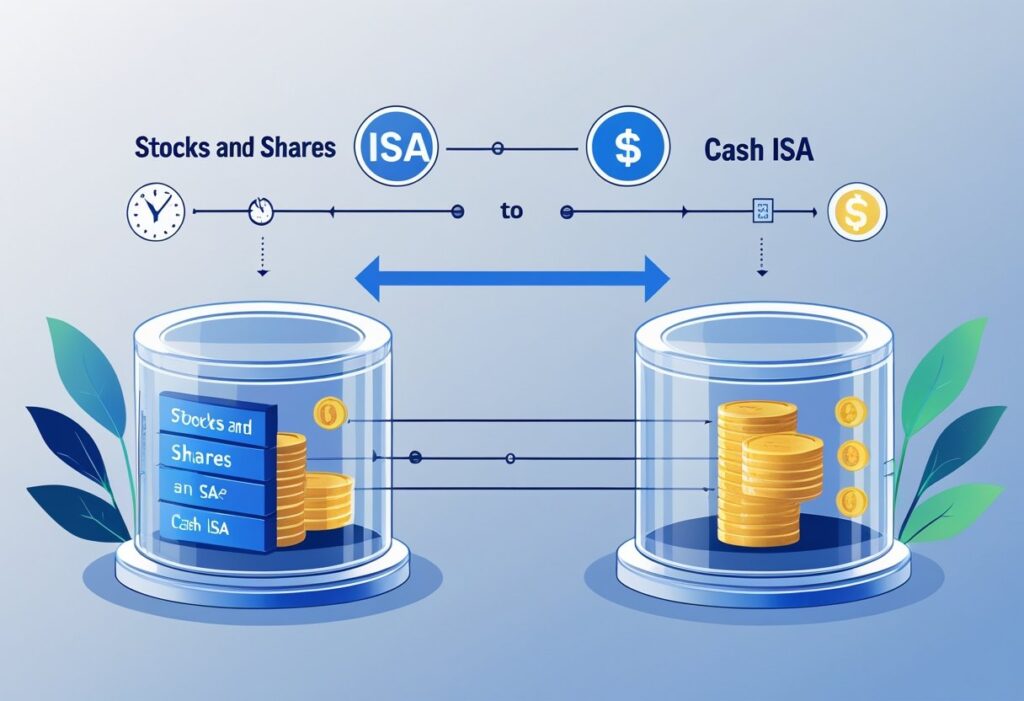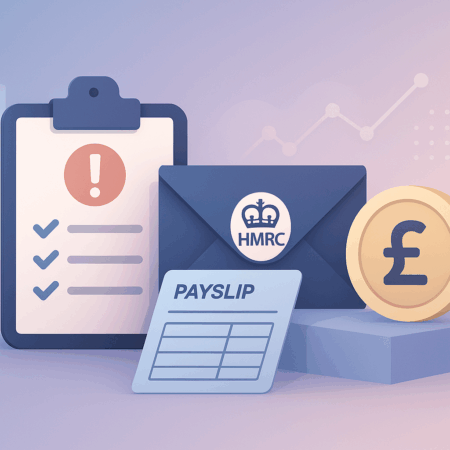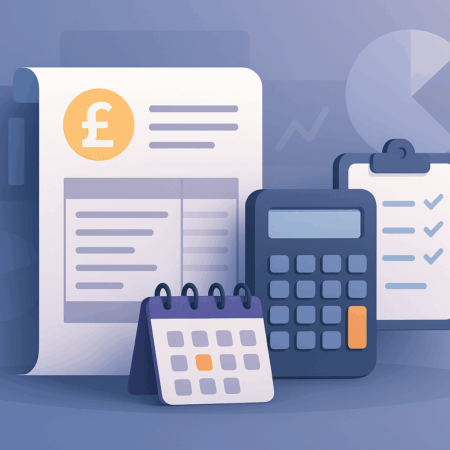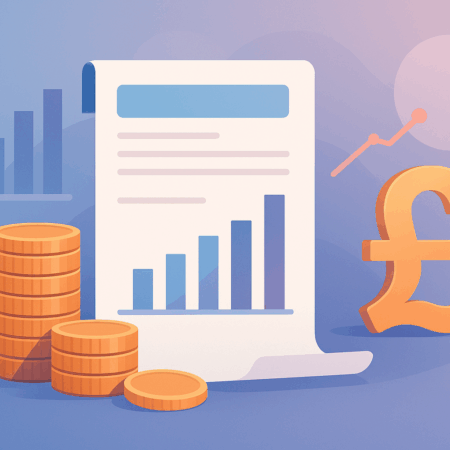Transferring a Stocks and Shares ISA to a Cash ISA is a pretty common move for folks who want a safer, more stable place for their savings. This process lets you move investments into cash without losing the ISA’s tax perks.
It often appeals to people who want to sidestep market risks or need their money soon.

You can’t just withdraw and redeposit the money if you want to keep your tax-free status. Instead, you’ve got to follow the ISA transfer rules and let the providers handle the move directly.
Knowing the process and the usual timeframes can help you dodge unnecessary charges or annoying delays.
Key Takeaways
- You keep the ISA’s tax-free status if you transfer properly.
- Transfers have rules and might take a few weeks.
- Moving to a Cash ISA helps you avoid market swings.
Understanding Stocks and Shares ISAs and Cash ISAs
Stocks and Shares ISAs and Cash ISAs are both popular in the UK. They both let your money grow tax-free, but how you invest—and the risks—are totally different.
Knowing these differences really helps you figure out which ISA fits your needs, or if switching makes sense.
What Is a Stocks and Shares ISA?
A Stocks and Shares ISA lets you invest in things like stocks, bonds, and funds, and you don’t pay tax on dividends or gains. Some people call it an investment ISA.
Your investment can rise or fall, so there’s some risk. Usually, investment ISA providers are banks or brokers.
People chasing long-term growth tend to go for these. Some ISAs offer loads of investment options across different markets.
It’s smart to compare fees, investment choices, and past results before picking one. If you need your money soon, though, maybe skip this one—markets can be wild.
What Is a Cash ISA?
A Cash ISA is basically a savings account where your interest isn’t taxed. It works like a regular savings account but with that tax shield.
People use Cash ISAs to keep their money safe—no risk of losing your initial amount. Interest rates might be fixed or variable, and they’re usually lower than what you might get with stocks.
Cash ISAs fit best for short-term savings or if you just want peace of mind. Banks, building societies, and credit unions all offer them.
Interest rates change with the market, so keep an eye out.
Key Differences Between Stocks and Shares ISAs and Cash ISAs
| Feature | Stocks and Shares ISA | Cash ISA |
|---|---|---|
| Risk | Higher, investments can lose value | Low, capital protected |
| Returns | Potentially higher but variable | Modest and stable |
| Suitable for | Long-term growth and investment | Short-term, safe savings |
| Tax Benefits | Tax-free dividends and capital gains | Tax-free interest |
| Access to funds | May take time to sell investments | Instant or quick withdrawals |
| Providers | Banks, investment firms, brokers | Banks, building societies |
When you’re thinking about transferring, you’re basically moving from something riskier to something more secure.
Reasons for Transferring from a Stocks and Shares ISA to a Cash ISA
People transfer from a Stocks and Shares ISA to a Cash ISA for all sorts of reasons—reducing risk, chasing better interest rates, or just shifting financial goals. Each reason means weighing up tax benefits, possible returns, and your personal strategy.
Managing Risk and Market Volatility
Stocks and Shares ISAs leave your money exposed to the ups and downs of the market. When things get rocky, some folks just want to move to a Cash ISA to keep their capital safe.
A Cash ISA gives you a fixed or variable interest rate, but your original money’s protected. It’s a good way to dodge sudden market drops, especially if you’re feeling uneasy about the economy.
Sure, the returns are usually lower, but at least you know your money’s secure. Plus, the interest is tax-free, just like the gains from a Stocks and Shares ISA.
This stability can feel pretty comforting if you’re close to retirement or just tired of the rollercoaster.
Interest Rates and Investment Returns
Interest rates can really change how attractive a Cash ISA is. If rates jump, a Cash ISA might suddenly look better than a shaky stock market.
Some people switch because they see a better deal on interest, letting them earn a bit more without the stress of market swings.
But let’s be real—over the long haul, Stocks and Shares ISAs usually offer more growth. You’ve got to weigh up whether today’s rates make up for what you might miss out on with investments.
Both ISAs are tax-free, so it really comes down to your appetite for risk and what’s happening with interest rates.
Changing Financial Goals
Life changes, and so do your money goals. When you start caring more about keeping your capital safe than chasing growth, a Cash ISA starts to look tempting.
Maybe you want easier access to your cash or just want to know exactly what you’ll earn. Moving to a Cash ISA ticks those boxes and keeps your tax-free status.
You can still use your annual ISA allowance after transferring, so you’re not locked out of future contributions. That flexibility is pretty handy.
If you’re thinking about retirement, or just want your money handy for something soon, it might be time to switch gears.
ISA Transfer Rules and Requirements
Transferring a Stocks and Shares ISA to a Cash ISA means following some rules. These cover which accounts you can transfer, how much you can move, and any special limits for certain ISAs.
Knowing the details helps you get it right and keeps your tax perks safe.
Eligible ISAs for Transfer
You can transfer a Stocks and Shares ISA to a Cash ISA, but you’ve got to use the official ISA transfer process. The new Cash ISA provider will handle the move for you.
This doesn’t count as opening a new ISA, so your current year’s allowance isn’t affected. You’re just moving money you already put in.
You can sometimes transfer from other ISAs, like Innovative Finance ISAs, but check with your provider first—rules can differ.
Partial vs Full Transfers
You can move everything over (full transfer) or just part of your money (partial transfer). Some providers only allow full transfers, so it depends who you’re with.
Partial transfers are handy if you want to keep some investments running and move the rest to cash. Either way, your tax-free status stays put.
Transfers usually take up to 30 calendar days for Stocks and Shares ISAs, but it can vary.
Restrictions for Lifetime and Junior ISAs
Lifetime ISAs (LISAs) and Junior ISAs come with their own rules. You can only transfer a Lifetime ISA to another Lifetime ISA—not straight to a Cash ISA.
If you try to pull money out of a LISA, you might get hit with penalties or lose the government bonus.
Junior ISAs can move between providers, but you can’t transfer them to an adult ISA while the child’s under 18. The money has to stay in Junior ISA accounts to keep the tax perks.
Parents or guardians manage these transfers until the kid hits 16 or 18, depending on the rules.
How to Transfer a Stocks and Shares ISA to a Cash ISA

Transferring a Stocks and Shares ISA to a Cash ISA means picking a new provider, filling out the right form, and knowing how your assets will move. Each step matters if you want to keep your tax-free status.
Choosing a New ISA Provider
Start by finding a Cash ISA provider that fits your needs. Some, like Moneyfarm, offer easy online processes and transparent fees.
Compare interest rates, how quickly you can get your money, and how long transfers usually take. Make sure your provider’s authorised for Cash ISAs and knows what they’re doing with transfers.
It’s worth checking their transfer policy and reading a few customer reviews. The faster the transfer, the better—Cash ISA transfers often take about 15 working days.
Completing the ISA Transfer Form
To kick things off, fill out an ISA transfer form. This lets the new provider move your money from your Stocks and Shares ISA.
You’ll need to get the details right—old provider’s name, account numbers, how much you want to transfer. Don’t just withdraw the money yourself, or you’ll lose the tax perks.
Once you’ve sent the form, the new provider takes over and sorts it all out with your old provider.
In-Specie vs Cash Transfers
When you move from a Stocks and Shares ISA to a Cash ISA, it’s almost always a cash transfer. That means your investments get sold, and only the cash moves.
You can’t really do in-specie transfers between these two types—assets don’t move directly. If your investments are sold, you might have to wait a bit for the cash to clear.
Keep in mind, your investments’ value could change while you wait. The transfer clock starts when the Transfer Authority Form is accepted, and it can take up to 26 working days.
Timeframes, Fees, and Potential Pitfalls

Transferring a Stocks and Shares ISA to a Cash ISA takes some patience, and you might run into fees or rules you didn’t expect. You’ve got to use the formal process if you want to keep your tax benefits.
Typical Transfer Timelines
ISA transfers usually take anywhere from 15 to 30 working days. It depends on your providers and the type of ISA you’re moving.
Stocks and Shares ISA transfers can take longer since your investments need to be sold first. Always use the formal transfer process—if you just withdraw and redeposit, you could lose your tax relief.
Most providers keep you updated, but delays happen if paperwork’s missing or things get complicated.
Charges and Penalties
Some providers charge exit or transfer fees. These might be flat fees or a percentage of your balance.
Always check the terms with both your old and new provider before starting. Selling your shares to move into a Cash ISA could mean trading fees or Stamp Duty Reserve Tax (0.5% on share purchases).
ISAs protect you from capital gains tax, but these other fees can still chip away at your returns. If you skip the formal process, you risk losing your tax-free status.
Look out for hidden costs, and ask your provider questions upfront. It’s better to be slightly paranoid than surprised later.
Avoiding Loss of Tax Benefits
The biggest risk with ISA transfers? Losing that precious tax-free status. You really need to use the official transfer process to keep your money inside the ISA wrapper.
If you just take the cash out and put it back in, HMRC sees that as a new subscription. That can easily push you over the annual limit.
Keep good records and double-check everything with both ISA managers. If something goes wrong, you can ask the Financial Ombudsman Service to step in and help sort it out.
Tax Implications and Allowance Considerations
Transferring from a stocks and shares ISA to a cash ISA brings up a few questions about tax benefits and allowances. You need to know how the transfer affects your annual ISA allowance and any tax on gains or income.
Maintaining the Tax-Free Allowance
For the 2025/26 tax year, the annual ISA allowance is £20,000. Transfers between ISAs don’t reduce your allowance because they’re not treated like new subscriptions.
When you move money from a stocks and shares ISA to a cash ISA, it doesn’t eat into your allowance. Just make sure your ISA provider does the transfer properly to keep the tax-free status.
If you withdraw the money and pay it into another ISA yourself, it might count as a new subscription and use up some of your allowance. Stick to ISA-to-ISA transfers to keep the full allowance safe.
Impacts on Capital Gains and Income Tax
You don’t pay Capital Gains Tax (CGT) when you transfer investments within ISAs. Any gains you made in the stocks and shares ISA stay sheltered, even if you move to a cash ISA.
Interest from a cash ISA stays free from Income Tax after the transfer. By keeping your money in ISA wrappers, you shield your savings from both CGT and Income Tax.
But if you earn gains or income outside of ISAs, you’re still on the hook for those taxes.
Alternatives and Additional Options
You’ve got other ISA choices besides just moving from a Stocks and Shares ISA to a Cash ISA. Some come with different risks and rewards. It’s worth knowing what’s out there before you decide.
Innovative Finance ISAs
An Innovative Finance ISA (IFISA) lets you lend money through peer-to-peer platforms and keep returns tax-free. Sometimes you’ll see higher interest rates than with Cash ISAs, but there’s a bigger risk if borrowers can’t pay you back.
You can transfer money into an IFISA from other ISAs, like Cash or Stocks and Shares ISAs. Always check the platform’s reputation and what fees they charge before you move your money.
Just a heads up: IFISAs aren’t covered by the Financial Services Compensation Scheme (FSCS), so there’s some risk you can’t escape. This option works for people who want better returns but don’t want to dive into stocks directly.
Considering an Investment ISA
When people say “Investment ISA,” they usually mean a Stocks and Shares ISA. These hold shares, funds, or bonds. They offer more growth potential than a Cash ISA, but you’re taking on more risk.
If you transfer from Stocks and Shares to Cash, you might miss out on growth, but you’ll get more security and easier access to your money. Some folks stick with Investment ISAs for the long haul, especially if they want to grow their money over time.
You should think about your risk tolerance, your goals, and what’s happening in the markets. And always use your ISA provider’s transfer service to keep those tax perks.
Comparing ISA Providers
Picking the right ISA provider really matters, especially when you’re transferring or opening a new account. Providers have different fees, interest rates, investment options, and customer service.
Some might hit you with exit fees or drag their feet on transfers. Here’s a quick table to help you compare:
| Feature | What to Check |
|---|---|
| Fees | Transfer fees, management charges |
| Interest/Returns | Rates for Cash ISAs or fund options |
| Transfer speed | How long transfers take |
| Customer service | Support availability and reviews |
Comparing providers helps you get the best mix of cost, return, and service. It’s definitely worth using someone with experience in ISA transfers to avoid headaches.
Frequently Asked Questions
Transferring a Stocks and Shares ISA to a Cash ISA has its own set of rules. You can usually do it online, but it depends on the providers. Timing matters, too, and you’ll want to follow the right steps with both your current and new ISA providers.
What are the regulations for transferring from a Stocks and Shares ISA to a Cash ISA?
You have to let the new ISA provider handle the transfer to keep your tax-free status. You can transfer as cash (by selling investments first) or, if allowed, transfer investments “in-specie.” The money or investments need to go straight between providers.
Can I complete the transfer of my ISA from Stocks and Shares to Cash online?
A lot of providers let you start and manage the transfer online. Usually, you fill out a transfer form on the new provider’s website. Some might want extra verification by phone or post.
How do I initiate a transfer of my ISA from a company like Santander to a Cash ISA?
Contact your new Cash ISA provider first and ask them to start the transfer. They’ll get in touch with Santander to move your money. Don’t withdraw the money yourself or you’ll lose the tax benefits.
What are the steps to transfer my ISA from platforms like Trading 212 to a Cash account?
First, pick your new Cash ISA provider. Fill out their transfer application. Trading 212 will get notified and release the funds, usually after selling any investments if you’re transferring as cash.
What should I consider to determine the best time to transfer my ISA?
Look out for any fees or penalties for selling investments early. Market conditions can change the value of your investments if you sell. Some people wait until the end of the tax year to avoid messing with their annual allowance, but it depends on your situation.
How can I transfer my ISA to a Cash ISA with financial institutions such as Nationwide?
First, reach out to Nationwide and ask to open a Cash ISA. They’ll give you an ISA transfer form—fill that out.
Nationwide will handle the rest. They’ll contact your current ISA provider and move your funds over, so you keep your tax-free benefits.









